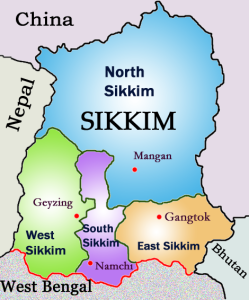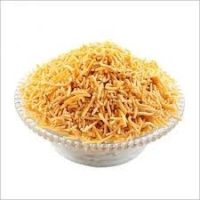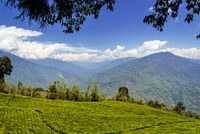Sikkim

We welcome all SME/MSMEs (Micro Small and Medium Enterprises) and startups of Sikkim to join and showcase their potential and value. We will be happy to promote your initiatives without any cost. Contact Us – team@a2zstartup.com
NEXTGEN PRINTERS PVT LTD., founded in the year 2008, was the first to set up a printing and packaging unit in the state of Sikkim, India. The state of the art Factory at Majhitar, Rangpo, East Sikkim, was set up for manufacturing different types of Folding Box Cartons with an investment of over INR 200 Million. The first phase commissioned in the year 2010 has a capacity of converting 200 MT of Paperboard.
Our hi-tech plant is equipped with the most modern and sophisticated production machinery imported from MITSUBISHI of Japan & BOBST of Switzerland along with supporting machinery being the best in the country. Today, NEXTGEN PRINTERS PVT. LTD. is recognized and admired as a leading Packaging Solution Provider in Eastern India specializing in developing and providing innovative and sustainable packaging solutions utilizing state-of-the-art technologies. Nextgen designs and manufactures paperboard folding cartons, and provides comprehensive contract packaging services for nearly for all the pharmaceutical companies located in Sikkim and the region around.
CG Foods India Pvt. Ltd. has set up its first plant in Sikkim to manufacture WAI WAI both Brown and White Noodles, Bhujiya, Cheese Balls and many others snack foods will be added to meet the increasing demand of India and abroad. The Sikkim Plant commenced commercial production from April 2006. The plant is spread over an area of 6 acres and have an annual Production Capacity of 11,000 MT of Noodles. Sikkim plant has already created a employee base of about 400 people which will increase in the times to come. The combined valuation of CGFI brands in South Asia far exceeds USD 100 Million.
The Temi Tea Garden in Ravangla, established in 1969 by the Government of Sikkim, is located in South Sikkim in the northeastern Indian state of Sikkim. It is the only tea garden in Sikkim and considered one of the best in India and in the world. Top quality tea is produced, which is in demand in the international market. The garden is laid over a gradually sloping hill. The tea produced in this garden is also partly marketed under the trade name “Temi Tea”.
Take a look at our wikipedia page
Sikkim State Co-operative Supply and Marketing Federation ltd. (SIMFED) was established in the year 1983 under the Sikkim Co operative Society’s act of 1978 and Sikkim Co operative Societies Rule of 1981. SIMFED was established as an Apex Marketing society for the state of Sikkim with the main intension of undertaking wholesale supply of consumer goods to the Multi Purpose Cooperative Societies (MPCS) and Consumer Cooperative Societies (CCS) and to arrange for bulk marketing of the surplus Agricultural produce including the important cash crops of the state.
a2zstartup appeals to people of Sikkim to participate in “Start-up India, Stand-up India” campaign of Mr. Modi and strengthen entrepreneurship culture in your state. Two months back Prime Minister Narendra Modi has announced Mudra Yojana, and till date Banks have already disbursed Rs 24,000 crore to 27 lakh small entrepreneurs under the scheme. MUDRA was established as a subsidiary of the Small Industries Development Bank of India (SIDBI) with an initial corpus of Rs 5,000 crore to provide capital to all banks seeking refinancing of small business loans under PMMY. PMMY loans fall into three categories — Shishu (up to Rs 50,000), Kishore (Rs 50,000-Rs 5 lakh), Tarun (Rs 5-10 lakh).
Some Important Aspects of Sikkim:

Overview: Sikkim is surrounded by vast stretches of Tibetan Plateaus in the north, the Chumbi Valley of Tibet and the Kingdom of Bhutan in the east, the Kingdom of Nepal in the west and Darjeeling district of West Bengal in the south. The state is richly endowed with rare and exotic flora and fauna, which includes 4,500 different flowering plants, 550 types of orchids, 36 varieties of rhodendrons, 28 bamboo species, over 144 mammals, 552 species of birds and 600 different butterflies. This makes it one of the leading states in the Northeast region in terms of production and supply of cut flowers to mainland consumer markets. Sikkim has several snow-capped peaks including Kanchenjunga, the world’s third highest peak that attracts a large number of tourists from across the globe. Sikkim was rated as the best place to visit in 2014 by The Lonely Planet. The state has been able to bag seven out of 25 central government’s national projects to promote India as destination for adventure tourism globally. The gross state domestic product (GSDP) of Sikkim expanded at a high compound annual growth rate (CAGR) of 18.3 per cent between 2004-05 and 2014-15. There has been a drastic shift in the sectoral contribution from primary and tertiary to the secondary sector. In 2014-15, the secondary sector contributed 62.22 per cent to the state’s GSDP at current prices. Moreover, at a CAGR of 27.9 per cent, the secondary sector has been the fastest growing among the three sectors from 2004-05 to 2014-15. It was driven by manufacturing, construction and electricity, gas & water supply. Sikkim has a suitable climate for agricultural and horticultural products. It supports multiple crops; viz., rice, wheat, maize, millet, barley, urad, pea, soya bean, mustard and large cardamom. Sikkim is the top producer of large cardamom, contributing over 80 per cent to India’s total production. Sikkim plans to become the first state in India to transition its agriculture to entirely organic cultivation by 2015. The state follows the North East Industrial Investment Promotion Policy, 2007, which provides several incentives and concessions for investment. Institutional support is provided through various central and state government agencies viz., North East Council, Ministry of Development of North Eastern Region and Commerce and Industries Department.
Economic Aspects of Sikkim: Sikkim’s nominal state gross domestic product (GDP) was estimated at US$1.57 billion in 2014, constituting the third-smallest GDP among India’s 28 states. The state’s economy is largely agrarian, based on the terraced farming of rice and the cultivation of crops such as maize, millet, wheat, barley, oranges, tea and cardamom. Sikkim produces more cardamom than any other Indian state, and is home to the largest cultivated area of cardamom. Brewing, distilling, tanning and watchmaking are the main industries, and are mainly located in the southern regions of the state, primarily in the towns of Melli and Jorethang. In addition, a small mining industry exists in Sikkim, extracting minerals such as copper, dolomite, talc, graphite, quartzite, coal, zinc and lead. Despite the state’s minimal industrial infrastructure, Sikkim’s economy has been among the fastest-growing in India since 2000; the state’s GDP expanded by 89.93 per cent in 2010 alone. Sikkim plans to become the first state in India to transition its agriculture to entirely organic cultivation by 2015. The opening of the Nathu La pass on 6 July 2006, connecting Lhasa, Tibet, to India, was billed as a boon for Sikkim’s economy.
Major Industries-Sikkim
Liquor industry: The liquor industry is a major source of excise revenue for the state. The state possesses a very efficient excise collection machinery. Excise (Abkari) Department is one of the single largest revenue earners of the state government. The excise department offices along with required manpower are situated at Sikkim Distilleries Ltd. Rangpo, Yoksum Breweries Ltd. Melli and Warehouses at Gangtok, Rangpo, Melli and Jorethang. The state excise act provides manufacture, possession, sale, transport, import and export of liquor, imposition of excise duty, etc, is collected by the state government on liquors under the provision of the Sikkim Excise Act ‘1992.
Tea Industry: Tea grown in Sikkim is famous by its brand name ‘Temi Tea’. Temi Tea estate is located in Temi, south Sikkim and is one of the best tea producing tea estate in the country. It was established in the year 1969.It produces about 100 MT tea annually. The orthodox variety of tea of Temi Tea is very rich in flavour and has high export potential. To its credit, Temi Tea fetches one of the highest prices at the Kolkata Tea auction. Under the assistance of Temi Tea Board, tea growers society like Sang-Martam Tea Growers’ Cooperative society has started flourishing which will further increase the products. Efforts are underway to source direct buyers in foreign markets for Sikkim’s tea and the field is open for investors interested in increasing Sikkim’s tea production capabilities. The Sang Martam Small Tea was established in 1998. This is a society where small farmers merge the land holdings together to start tea plantation. The total area of land under the cultivation of this society is around 75 acres. The society has a total of 140 members. Since the gestation period is long, tea plucking has started only recently; the green leaves are sent to Temi Tea factory for processing. However, a regular tea factory is being proposed. The tea produced is of orthodox variety.
Large Cardamom: Sikkim produces 80 percent of India’s cardamom (large). The main export markets are Pakistan, Singapore and the Middle East. The large cardamom can hence be converted into value added product. Large Cardamom is grown as an important spice crop in the state of Sikkim and West Bengal spread over about 26,437 hectares of land. The demand for large cardamom in the export market is bound to increase steadily. However, the internal consumption of cardamom is also increasing day-by-day.
Agriculture: Eighty percent of the population lives in rural Sikkim and agriculture plays a dominant role in the state economy. The main crops produced are rice, wheat, maize, large cardamom and ginger with potential for the commercialization of large cardamom, ginger, fruits, tea, medicinal herbs and exportable flowers. There are large areas of fallow land available, which can be converted into productive farms for cash crops.
Food processing: The food processing industry in the state specializes in mandarin oranges, ginger, tea and cardamom. In terms of prospect, medicinal and aromatic herbs will face an ever-expanding market both nationally and internationally. The varieties of medicinal plants available in the state are taken care. Wool and silk reeling, weaving and processing, and rabbit farming, all these activities may be carried out at the farm level and they may be treated as the primary or secondary sources of livelihood. Apart from this, Fruits can be processed for value addition. Exotic flowers can be cultured for export, Honey and tea are other agro-based products that have high potential.
Information Technology: Information Technology has been placed high on the state government’s agenda. Several initiatives have been taken by the state government to boost Information Technology sector in the state.
Tourism: Tourism is considered as the backbone of Sikkim’s economy. It has brought economic prosperity in the state. With the salubrious climate, the natural beauty and the fine cultural heritage of Sikkim, the growth in tourism sector has immense possibilities. There are large number of places of tourist attraction particularly the snow-clad mountains, the lakes and unspoiled forest areas and valleys of flowers. Sikkim has the advantage of having very fine that attracts Buddhist tourists from countries like Japan and the southeastern countries. Small but beautiful, Sikkim is situated in the eastern Himalayas. Spread below the Mount Khanchendzonga (8534 mts), the third highest mountain in the world, and revered by the Sikkimese as their protective deity. With an area of 7,300 sq kms and measuring approx. 114 kms from the north to south and 64 kms from east to west, the elevation ranges from 300 mts to over 8540 mts above sea level. Amidst the grandeur of the mountain peaks, lush valleys, fast flowing rivers, hills, Sikkim offers her visitors a rare and singular experience. Within a matter of hours one can move from the sub tropical heat of the lower valleys to the cold of the rugged mountain slopes that reach up to the area of perpetual snow.
Eco-Tourism, Mountain Tourism & Horticulture innovations: Eco-tourism, mountain tourism and horticultural innovations are other areas that hold enormous potential in the tourism sector of the state. Sikkim draws attention due to high altitude mountain trekking and climbing and pilgrimages to hill top monasteries. The state is endowed with some of the rare varieties of orchids, flowers, fruits, rhododendrons, butterflies as well as the rarely sighted snow leopard, bears and many bird’s species. According to Department of Information and Public Relations, more than one-third of the 5,000 flowering plants found in the country, are located in Sikkim. Similarly, almost fifty percent of 1400 butterflies, recorded in Indian subcontinent, have been identified in the state. The state has identified Dendrobium Nobile as the state flower, rhododendron as the state tree, red panda as the state animal and Blood Pheasant as the state bird.
Economic Infrastructure
Road: The total road length of the state is 2,383 km including 41 km of National Highway.Gangtok is connected by roads with Darjeeling, Kalimpong, Siliguri and also with all the district headquarters within Sikkim.
Railways: The closest railway stations are Siliguri (113 km) and New Jalpaiguri (125 km) connecting Kolkata, Delhi, Guwahati, Lucknow and other important cities.
Aviation: There is a helicopter service between Gangtok and Bagdogra heavily subsidized by the state government. The state has also initiated construction of number of helipads to connect the districts and sub-divisional headquarters and important tourist places.
Thrust Areas: Eco-tourism including hotels, resorts, spa, amusement parks and ropeways, Handicrafts and handlooms, Wool and silk reeling, weaving and processing, printing, etc., Floriculture, Precision engineering including watch making, Electronics including computer hardware and software, IT related industries, Food processing including agro-based industries, processing, preservation and packaging of fruits and vegetables, Medicinal and aromatic herbs- plantation and processing, Raising and processing of plantation crops i.e. tea, oranges and cardamom, Mineral based industry, Honey and Biotechnology.
(Source: indiainbusiness.nic.in, Wikipedia and ibef.org)
Useful Links:
Official Website of Government of Sikkim
MSME Development Institute, Sikkim
Commerce and Industries Department, Sikkim
Directorate of Handicrafts and Handloom





